September 13-23
Hey! Remember us? We’re still enjoying ourselves in Bend, OR, and have not taken any Airstream trips since arriving here, but we did go to Portugal in September of 2022. This seemed like a good place to organize all the photos from the trip, so here they are along with a bit of narration. The number of photos got a little out of control for one post, so I split it into three.
The quick backstory of this trip is that the company Tim works for decided to have a get-together for all their employees. Since the company is based in Europe and the employees live all over the world, they picked Portugal as the location. The gathering would be held at a resort just outside Lisbon for three nights. Three nights was a very short amount of time for Tim to fly all the way over there from the PNW so he took vacation time before and after the gathering and I joined him for the trip. We first spent a week visiting family in Connecticut and Delaware before flying to Lisbon. I stayed in the city while Tim attended the work event and then we had six more days together to explore around.

Lisbon
We arrived in Lisbon on the morning of the 13th after a 7-hour overnight flight from Newark, NJ. It was nearly 11 am local time but only 6 am according to our US east coast adjusted bodies. The shift in time combined with zero sleep on the plane for me and only an hour or two for Tim meant we arrived in a very sleepy fog. Despite the fuzziness, we made quick work of the airport and after breezing through customs, bypassing the baggage claim area (backpack luggage for the win!), and locating a kiosk where we could buy local sim cards for our phones, we were soon riding the underground metro through the city on the way to our hotel. A short 20-minute ride later and we emerged out into the bright Lisbon sun.

We walked a few blocks to the hotel and checked into our small, yet passable room. I choose the HF Fenix for its location and picked one of the smallest room options since it would be just me for most of the stay. I guess it must have been really uninspiring because I never took a single photo of the hotel or our room. The remainder of our first day was spent eating, napping, and wandering around the city nearest to the hotel trying to shake the jet lag.

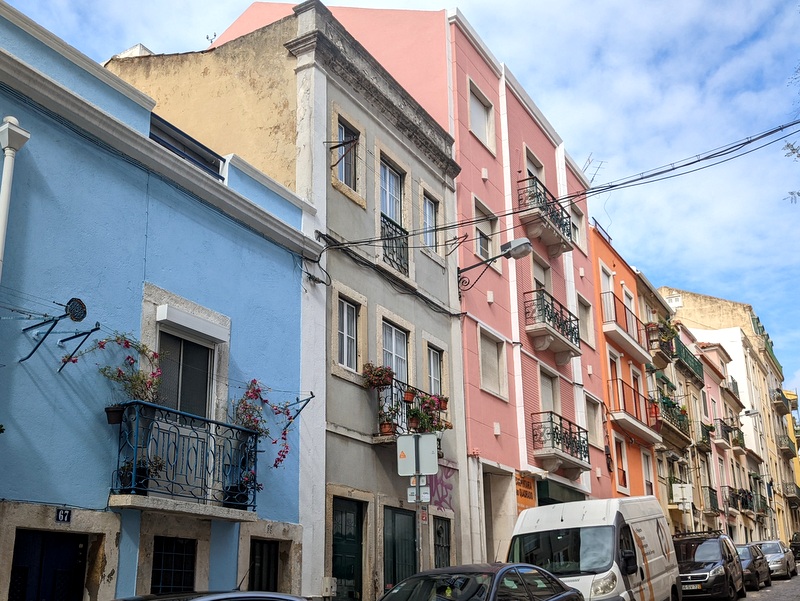
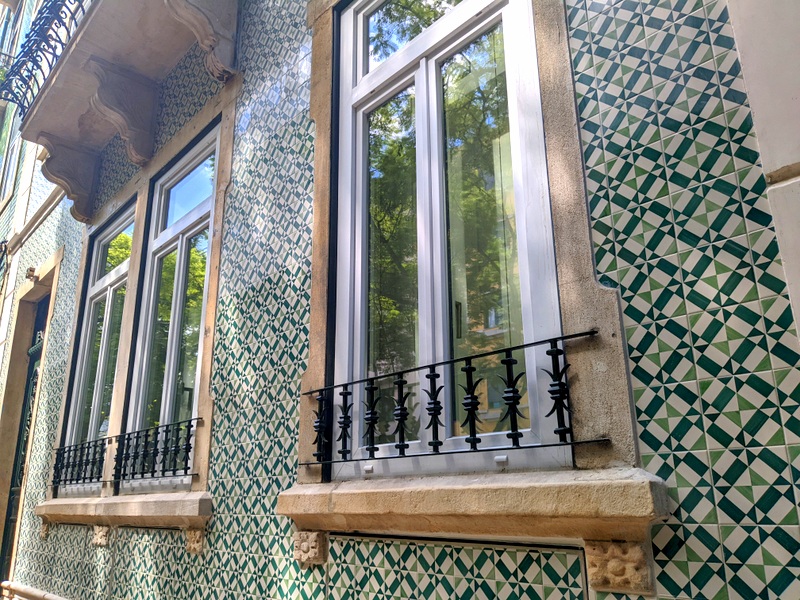
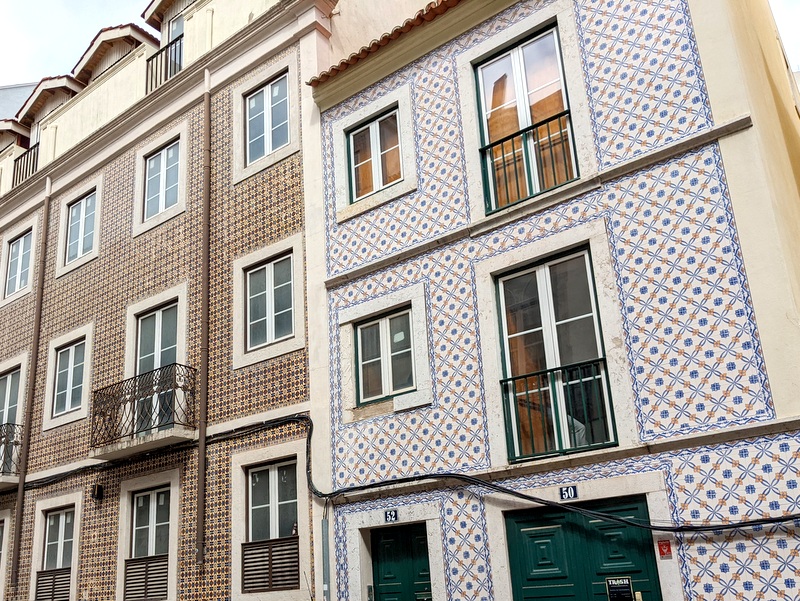
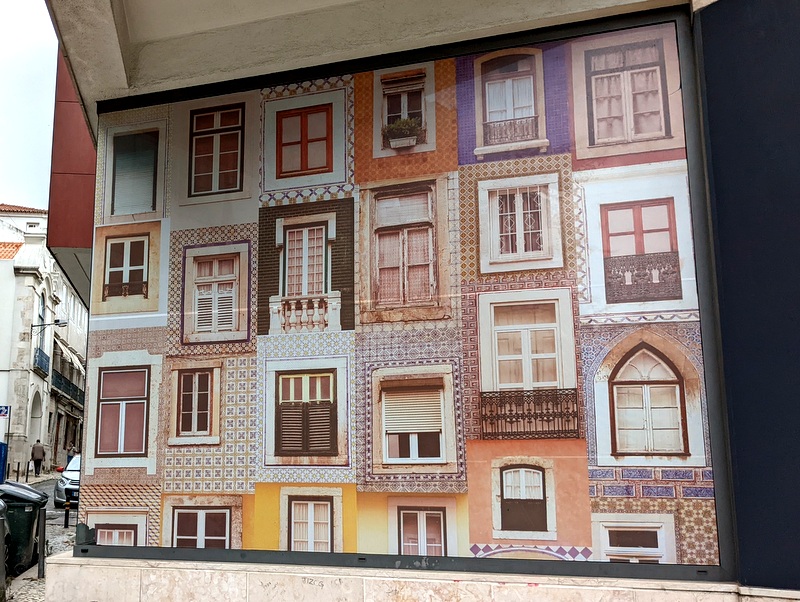
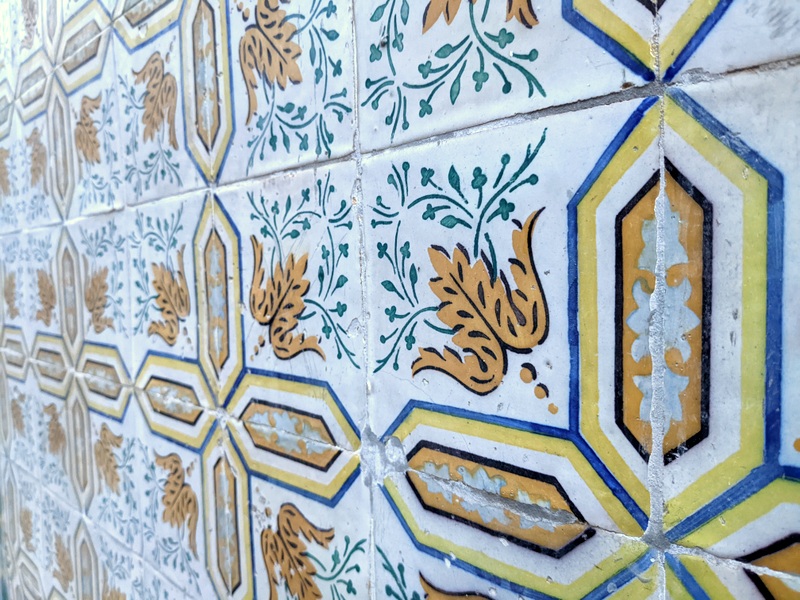
Portugal runs on a later schedule than we are used to with most restaurants not opening for dinner until 7 or 8 pm and most patrons not showing up until closer to 9 pm. It was easier to fall into this routine than I thought it would be. Probably because our normal schedule on that first day was already in disarray as we had not eaten our first meal until the early afternoon and then napped for several hours. By the time we took a short walk around to take in the city, it was pushing eight and we were ready for dinner.
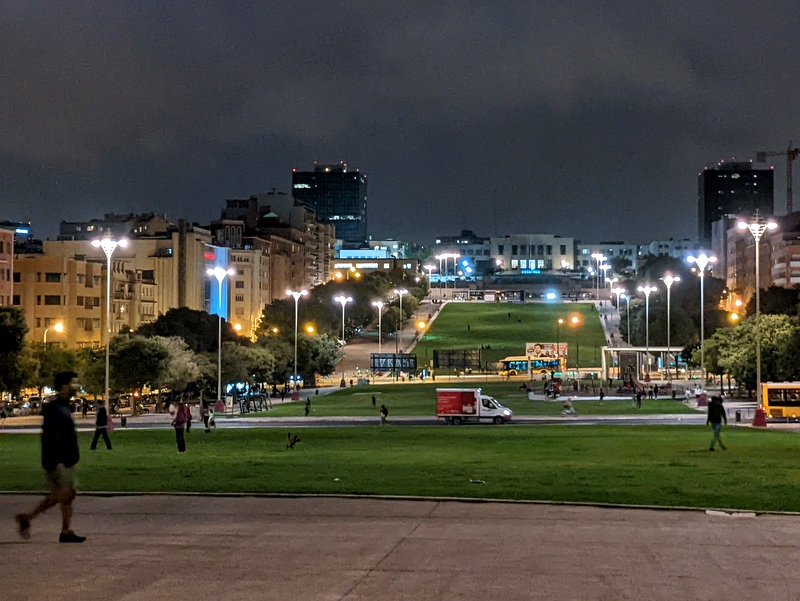
Eventually, we stumbled upon a small Italian restaurant with a bustling crowd outside the door. Turns out there was a wait for an indoor table but plenty of room on their outside patio. Probably because the sky that had been threatening to open up all day was now on the verge of a downpour. In fact, it did rain about midway through our meal but we stayed dry under the large umbrellas. And anyway, we were far too immersed in our food to care about a little rain.
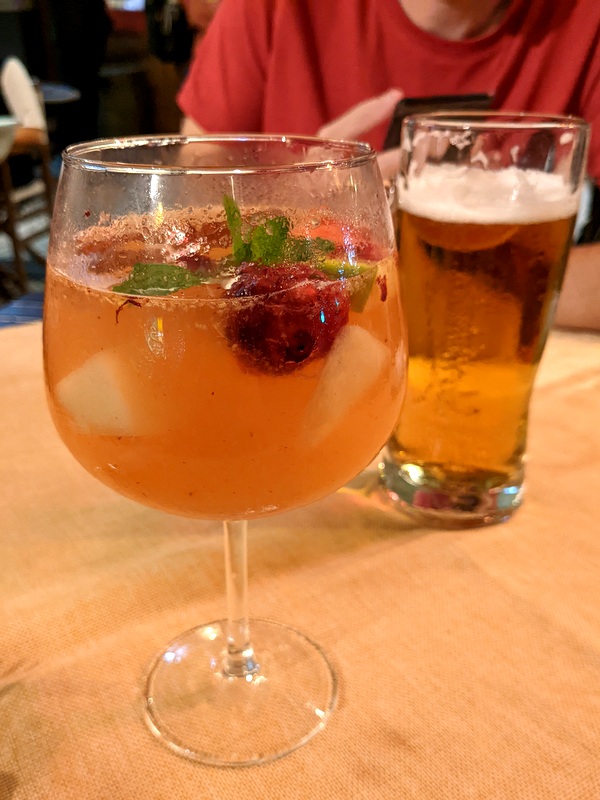
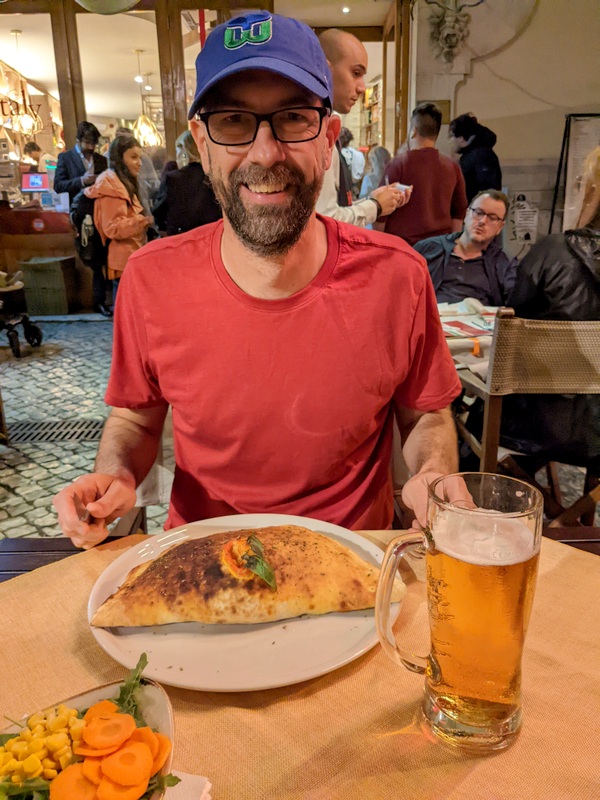

The next few days in Lisbon were all about sightseeing (and catching up on sleep). On our second day, Tim had to be at his work gathering outside of the city sometime in the mid-afternoon so we set out early to take in the sights before his departure.
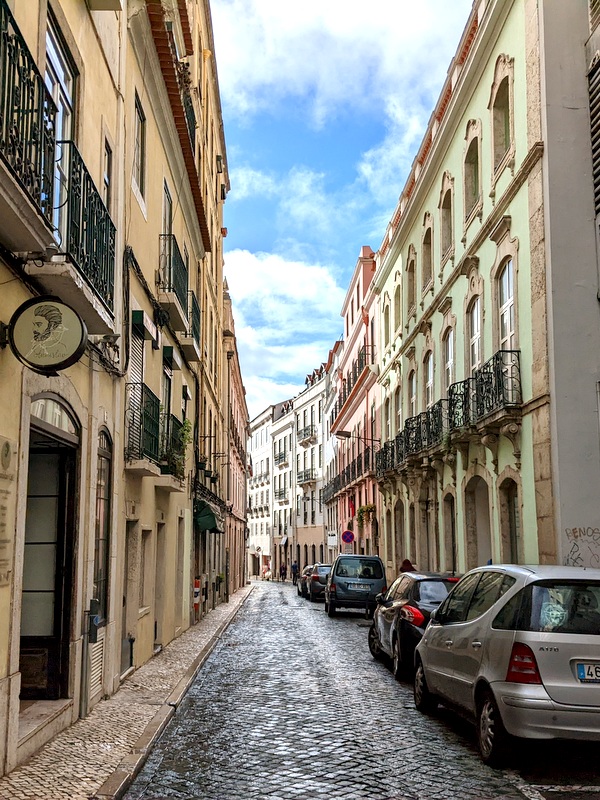


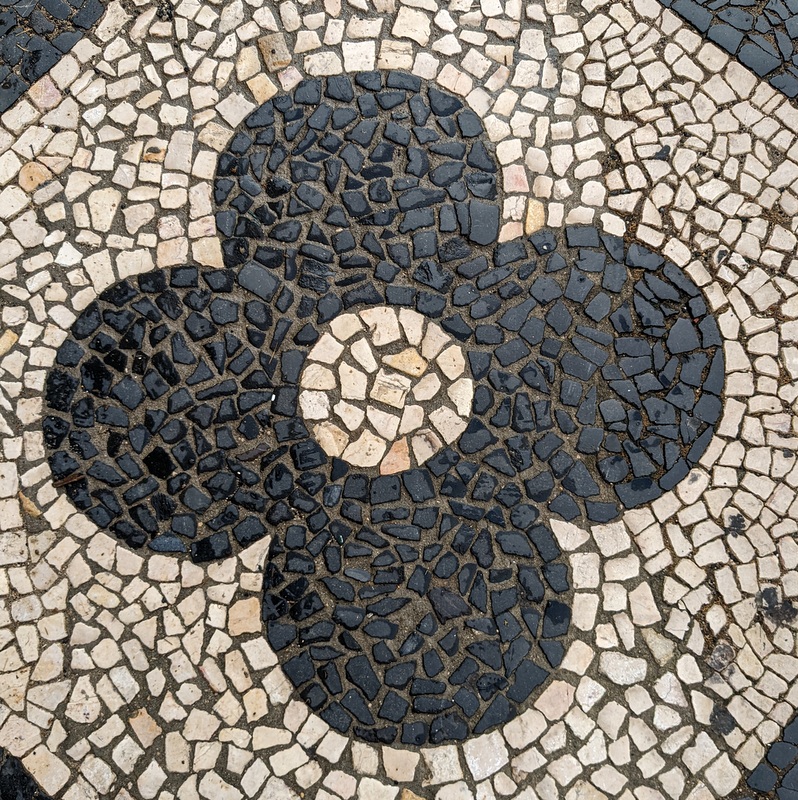
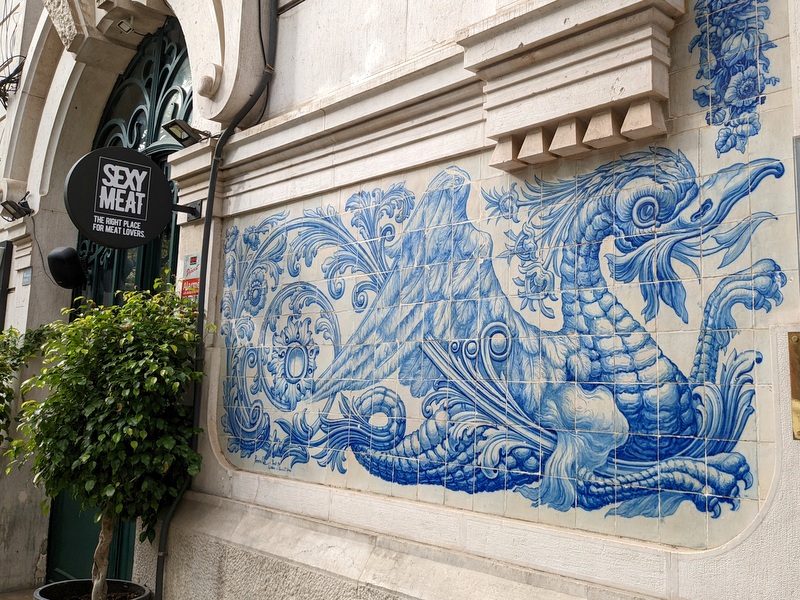

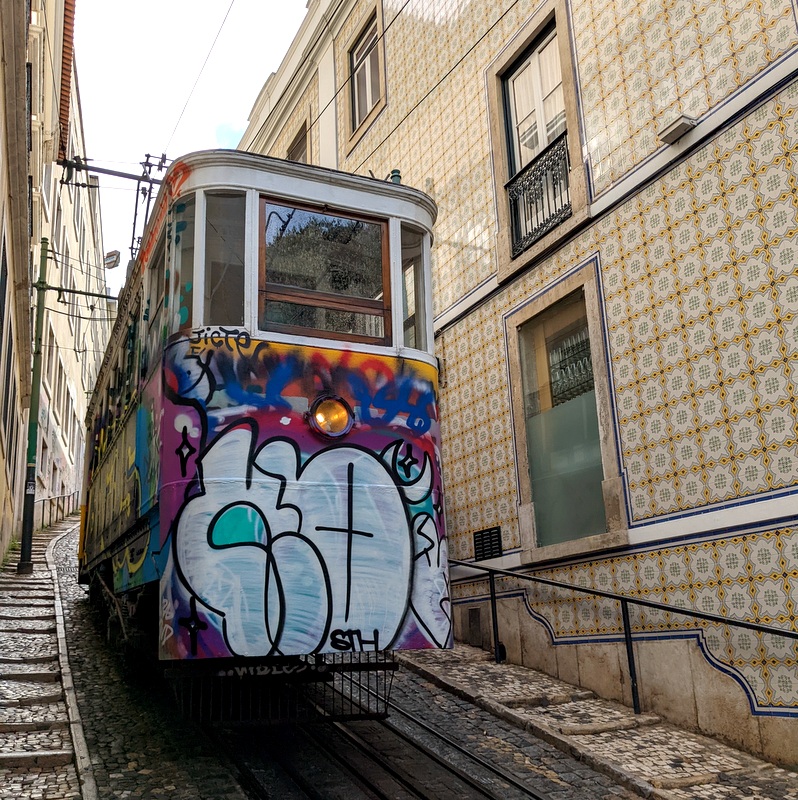
By the time we made it to the Praco do Comercio on the banks of the River Tagus, the rain was starting to come down. We quickly ducked into the Lisboa Story Center for an audio tour of Lisbon’s history. The visual displays were fairly lacking, but the audio was interesting and we left with a good overview of the history of Lisbon.
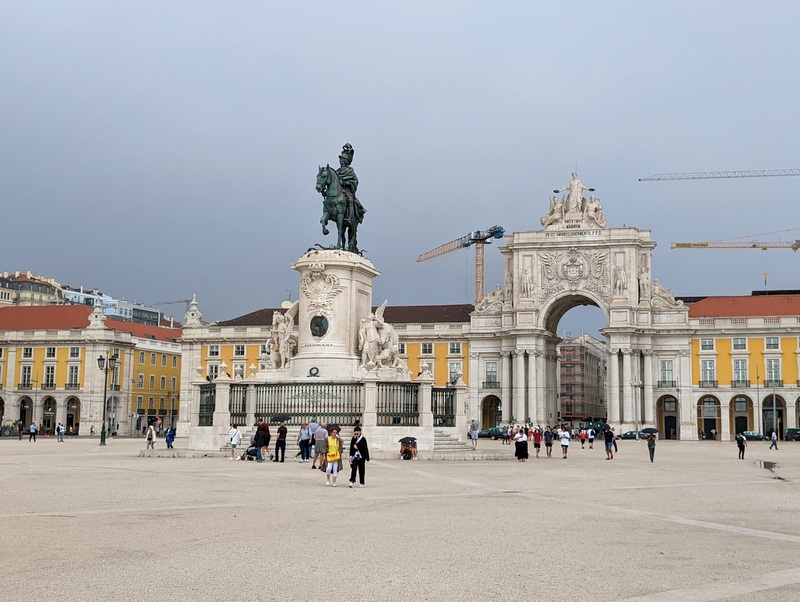
The sun was back out when we left the history center so we continued our walk around the Alfama area of the city where there are several famous miradouros, or viewpoints. Lisbon is very hilly and walking around the city can feel like you are riding a rollercoaster of cobblestone streets. But the hills also mean that you can find some cool views looking over the red roofs.
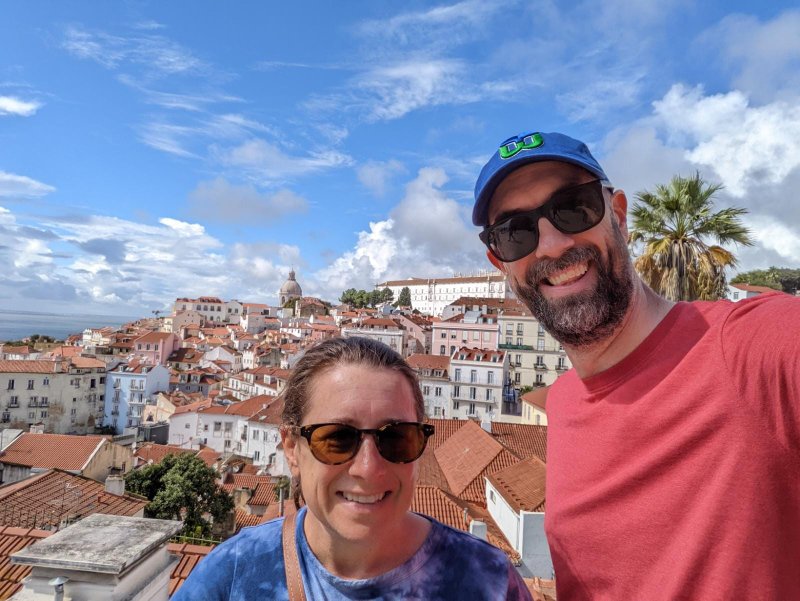
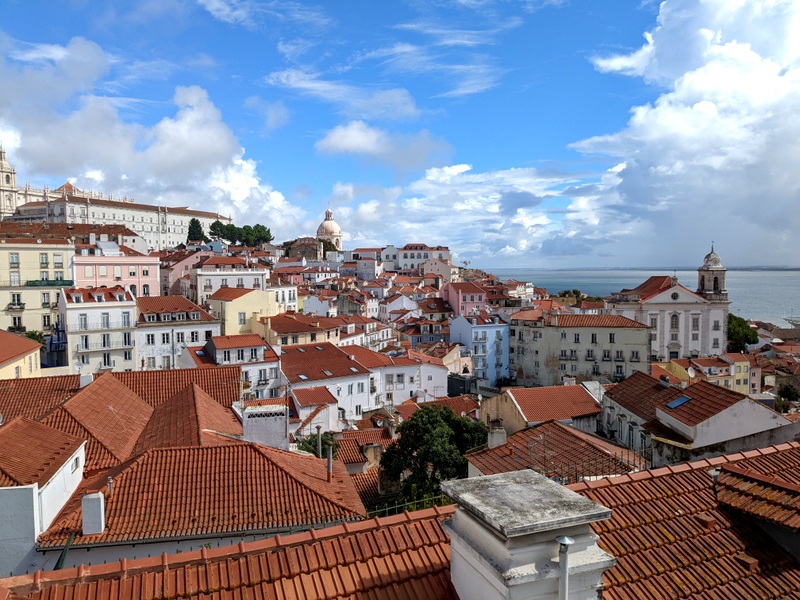
There are also lots of ways to get around the city aside from walking. There are the famous historic trams that take tourists around to some of the most popular places, lots of Tuks Tuks also offering tours, and of course, city buses, regular trams, and the underground Metro. I bought a Lisboa Card when I arrived that covered the cost of all public transport along with many museums and other attractions. It was well worth it and with Google Maps to assist, I found it very easy to navigate around the city no matter which form of transport I chose.
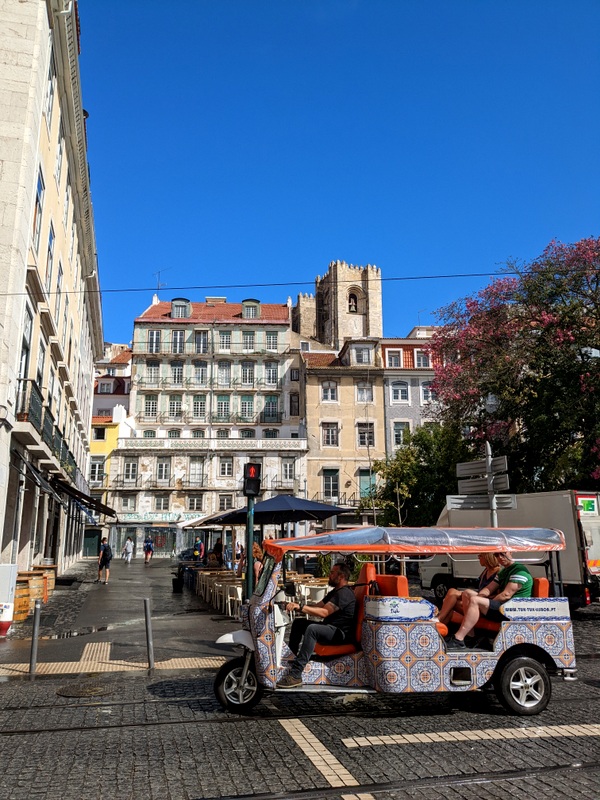
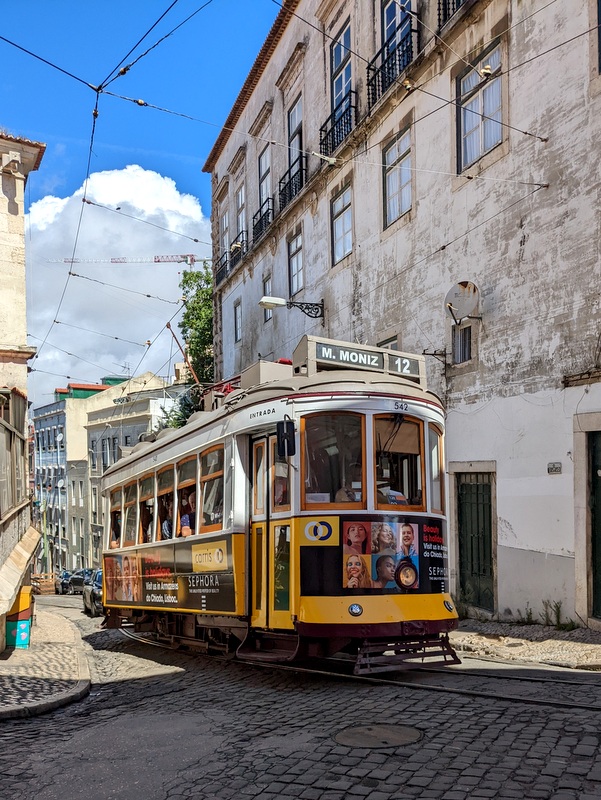
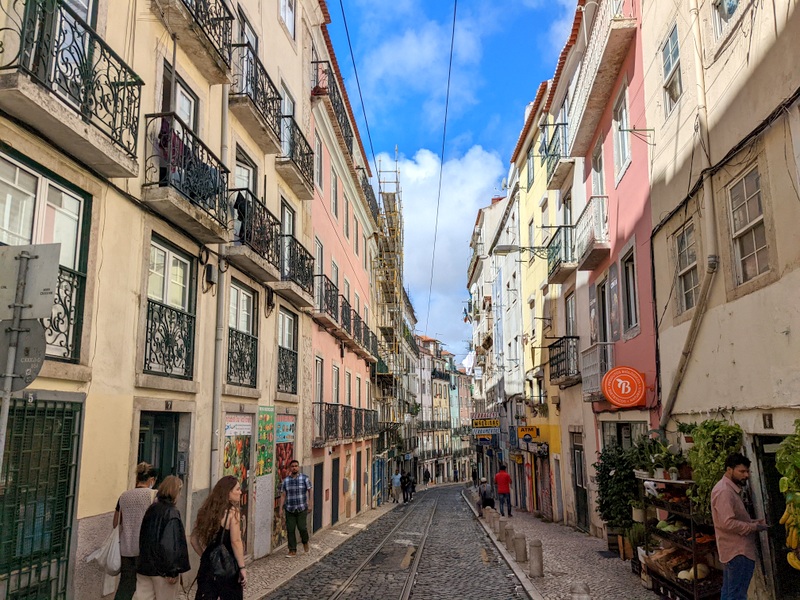
After Tim left, I spent a leisurely afternoon and evening at the hotel that consisted of both dinner and tv watching in bed. I tried to catch up on sleep and better adjust to the time change, but I slept terribly and ended up getting a very late start the next day. It was probably close to 10 by the time I made it to the bakery around the corner from the hotel where my plans for a healthy breakfast of fruit and yogurt were completely curtailed by a chocolate strawberry croissant that practically jumped out at me from the display case. When on vacation…

Fueled by a morning pastry and some of the freshly squeezed orange juice that is sold in all the cafes here, (the number of times I was asked if I wanted ice in my oj was disturbing. Who puts ice in their orange juice???) I set off to find the tram stop and was soon on my way to Belem for some sightseeing. This area of the city is located along the River Tagus and comes up as a must-visit on all the Lisbon lists. First up was the Belém Tower.
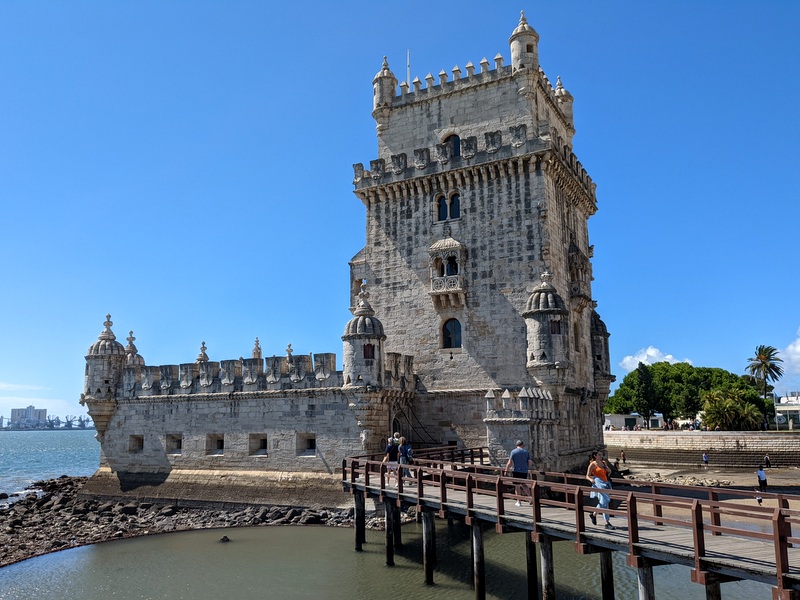
Built-in the early 1500s as a defense for the city, the tower was later used as a dungeon for prisoners, a customs house, and briefly as a lighthouse in the mid-1800s. The tower underwent a series of restorations and preservation efforts starting in the 1940s and today is a UNESCO World Heritage Site that is visited by tourists from around the world.
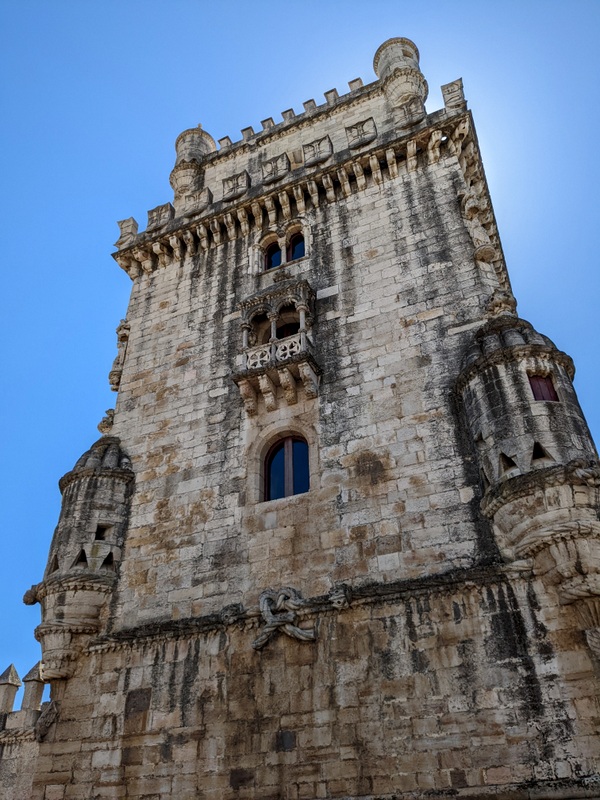
Since I got a late start, I decided on the tram that today I would pick just one or two attractions to visit, and the rest would only get a walk-by. The ticket line for touring the inside of the Belam Tower was really long, so this was the first thing I skipped. I am sure it would have been cool to go inside to see the dungeons and view the river from the second story, but it was also cool just to walk around the outside and admire the architecture.
After the tower, I followed the path along the waterfront past the Farol de Belam (Belam Lighthouse) and some tasty-looking food carts to the Padrão dos Descobrimentos (Monument to the Discoveries).
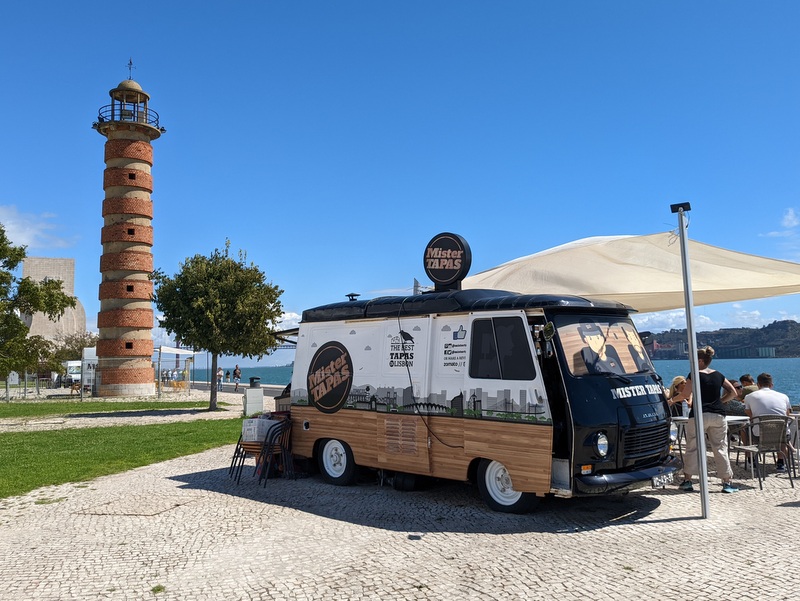
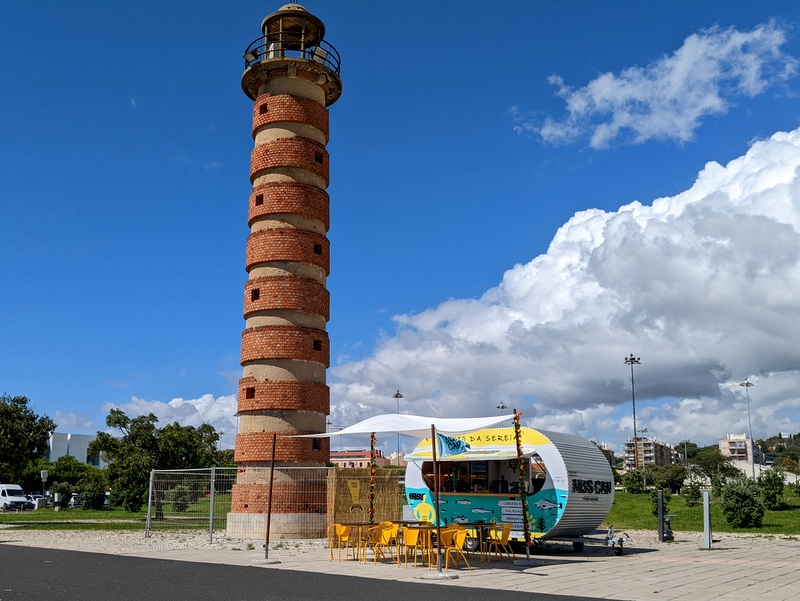

This monument was first built in 1940 as a temporary exhibit for the Portuguese World Exhibition to celebrate the Portuguese Age of Discovery. The original monument was gone by 1943 and then rebuilt in the ’60s as a permanent structure. The monument contains 33 figures that played a pivotal role in the discoveries era starting with Henry the Explorer at the top.

This time, the line to go into the monument was short, so I waited to pay the discounted rate with my Lisboa Card and then rode the elevator to the top. The view itself was worth the cost of admission (less than $10 with or without the card). I could see the river in both directions and the Jeromine Montestary with the city behind.



Since I had spied the monastery from the monument, this was my next stop. I knew this was a popular place and had not purchased a ticket ahead of time so I could decide on the spot if I wanted to go in. Even before I saw the long line snaking out of the building, I made the choice to simply look from the outside. It was really hot and humid and I couldn’t make myself stand there dripping sweat with a bunch of strangers. The building was impressive from the outside though!
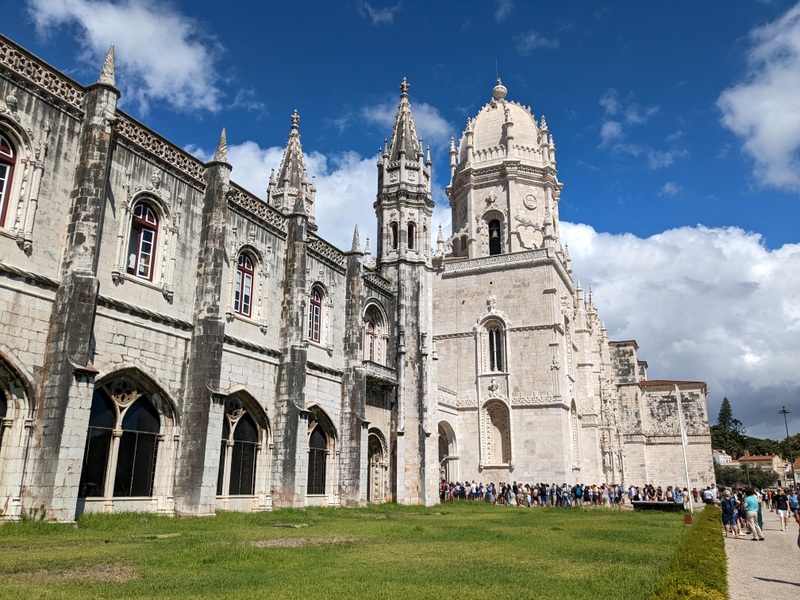
Instead of touring the monastery, I wandered through the main part of Belam, past the very busy pastry shop, through some gardens, and around the public square. I found a gelato treat and then continued down the waterfront path to the MAAT – Museum of Art, Architecture, and Technology. I was excited to spend an hour or two in this museum, but unfortunately, the main part of the building was closed and the only part I could visit was the old Tejo Power Station where they have an impressive exhibit showing the workings of a coal plant. And by impressive, I mean it was a building filled with old equipment used to generate power. The exhibits were well done, but not of very much interest to me personally.

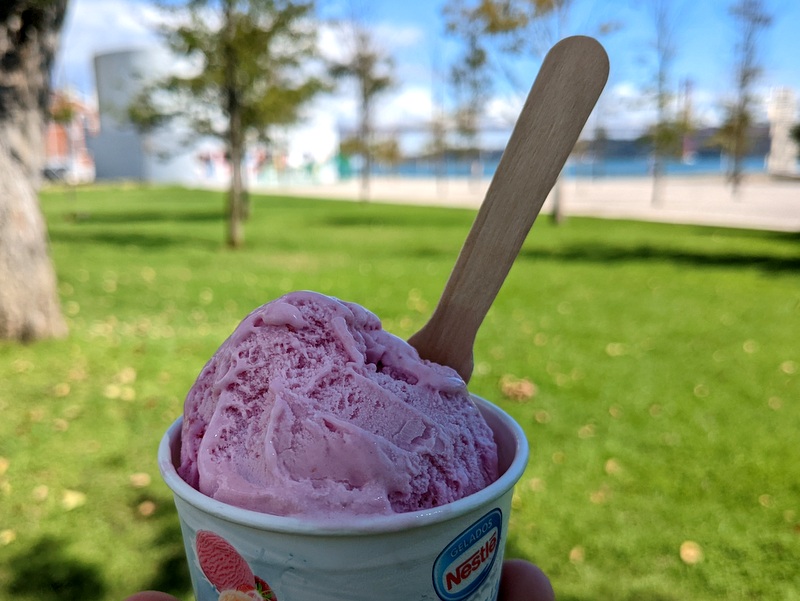
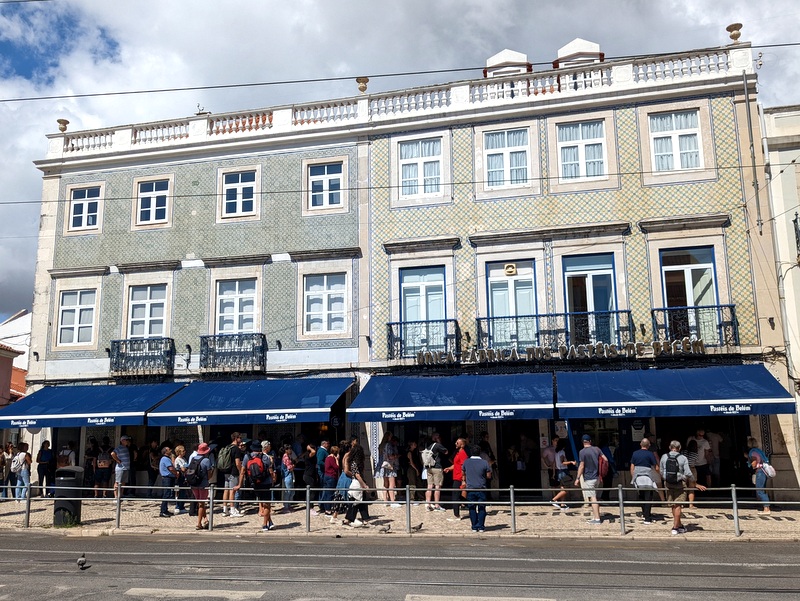
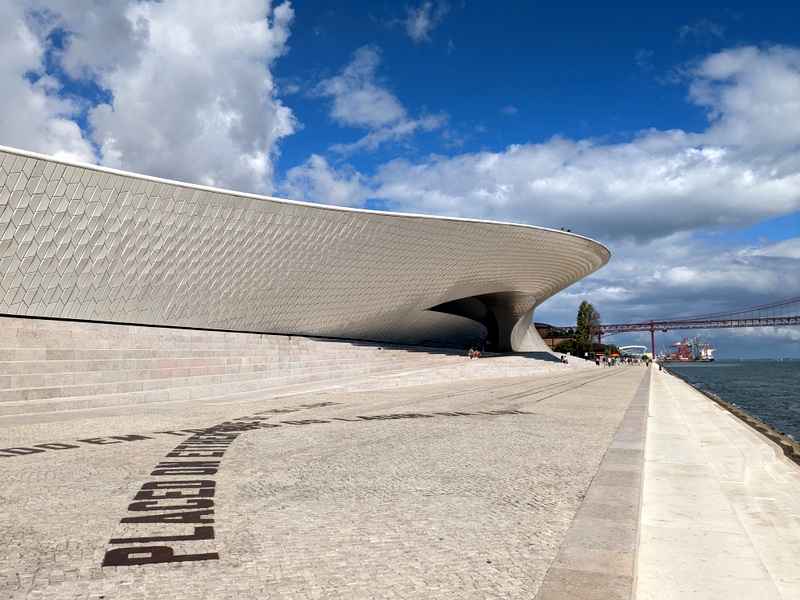

By this point, it was late in the day and I was ready to get out of the sun so I wandered over to the bus stop where I quickly boarded a bus that would take me back to the hotel. Looking back on this day, it strikes me that even though I skipped over the majority of my planned activities and instead mostly just walked around, it was pretty perfect. Sometimes subtracting items from the “must-visit” list is more enjoyable than pushing to fit them all in.
I woke up the next morning feeling refreshed and ready to tackle my last day in Lisbon. My plans included a leisurely breakfast (so big that it turned into breakfast & lunch), a tour of the Tile Museum, and two friend meet-ups later on.
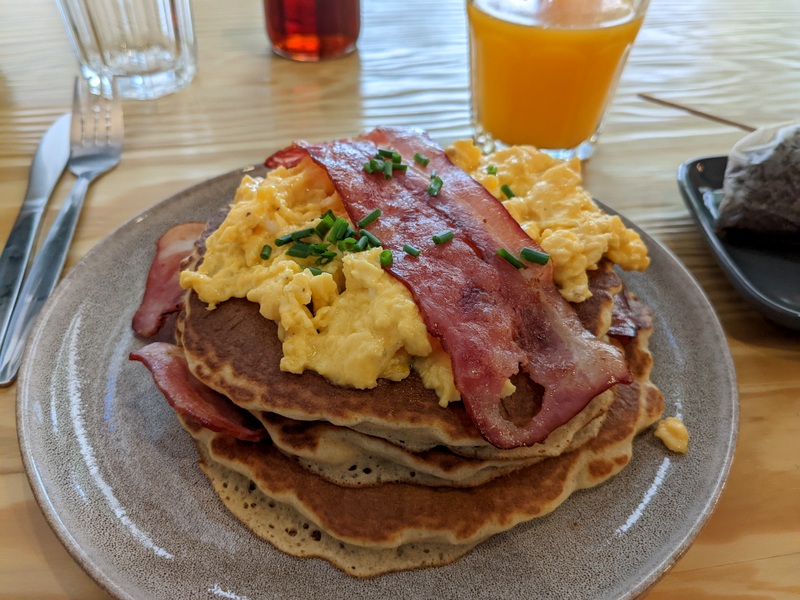
The Museu Nacional do Azulejo (National Tile Museum) was about 5 Km away so I took the bus there and then planned to walk back so I could see another part of the city. My favorite kind of city sightseeing is simply wandering around on foot. By the way, the bus system in Lisbon is excellent. I used it three times and always found it to be on time, clean, and not overly crowded. And since it was free with my Lisboa card I was easily able to get on by swiping the card instead of having to juggle with coins.
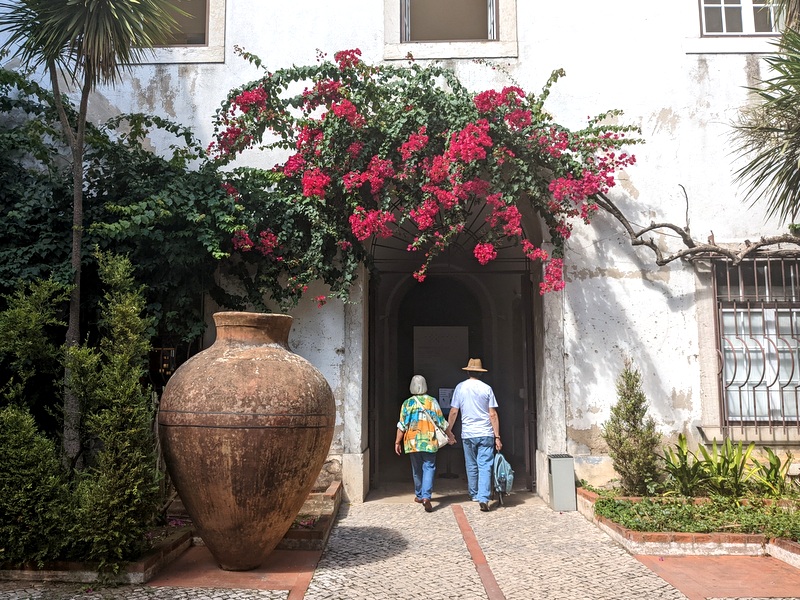
The tile museum was everything I hoped it would be and more. I spent a long time there reading about and admiring the tiles. There were a few exhibits that showed the techniques for how the tiles were made and decorated, but mostly the museum was full of beautiful tiles on display from all different eras. After seeing so many buildings in town covered with tiles, it was fascinating to learn about this tradition and see examples from over the years.

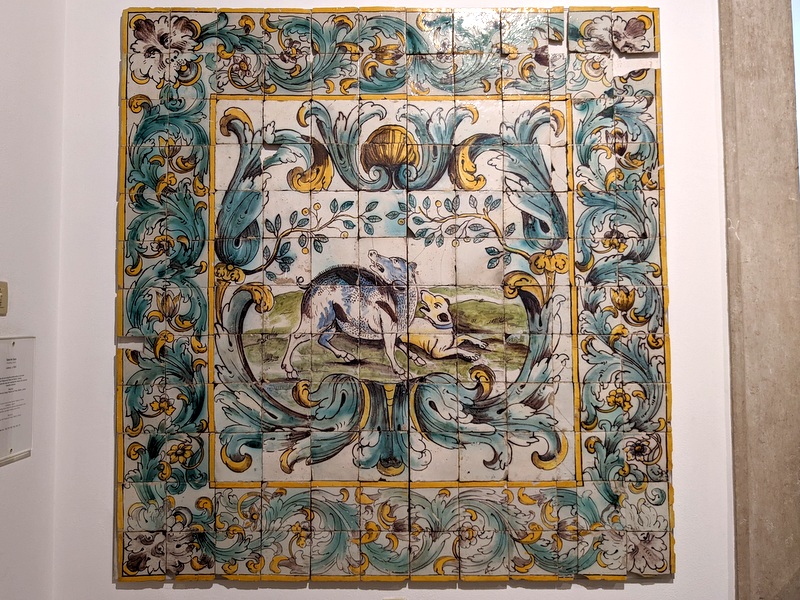

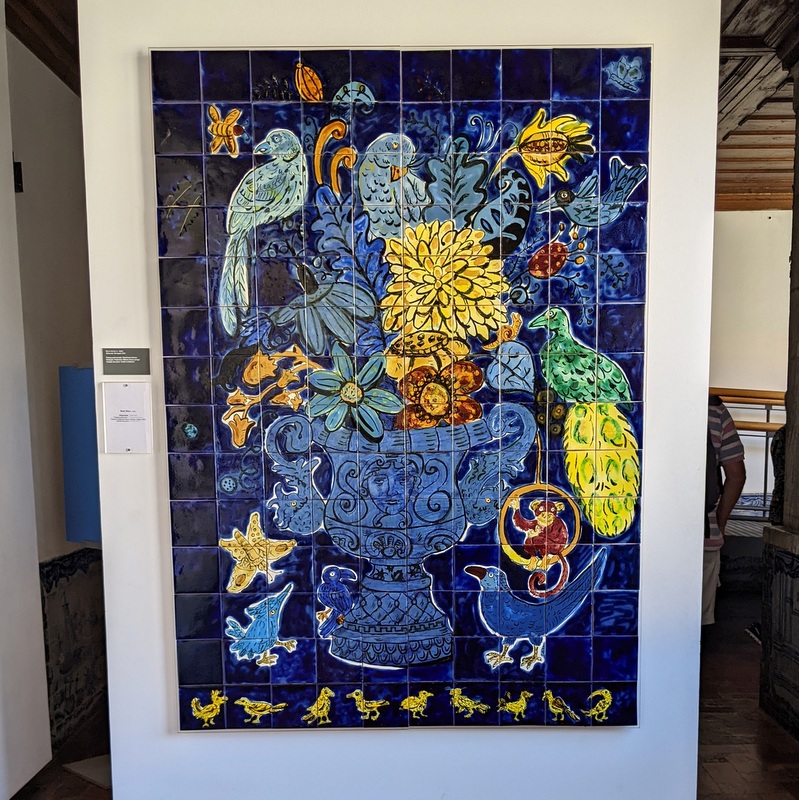
While the tiles displayed on the walls were impressive, what really makes this museum unique is the building it is housed in. Located in a 16th-century monastery, the ornate details and tile work incorporated into the building were simply spectacular. There is also a chapel decorated with the fanciest ceiling I have ever seen.
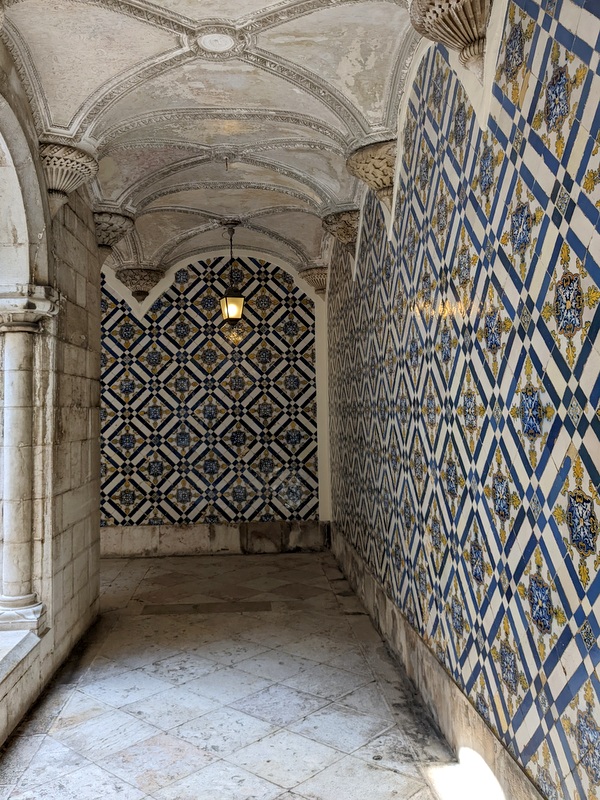
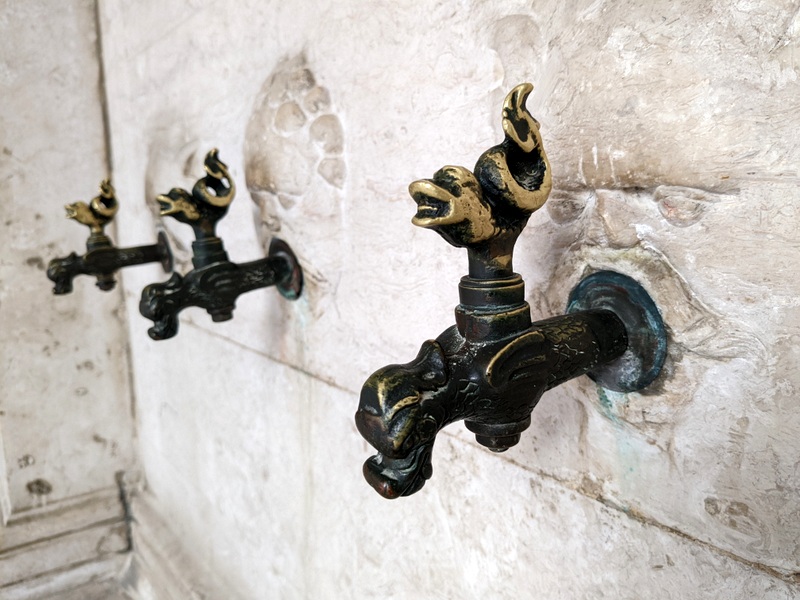
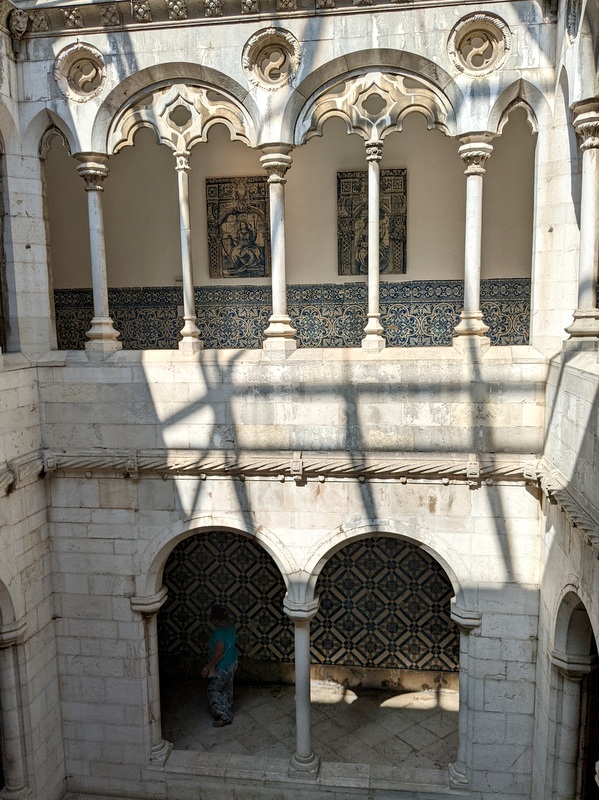
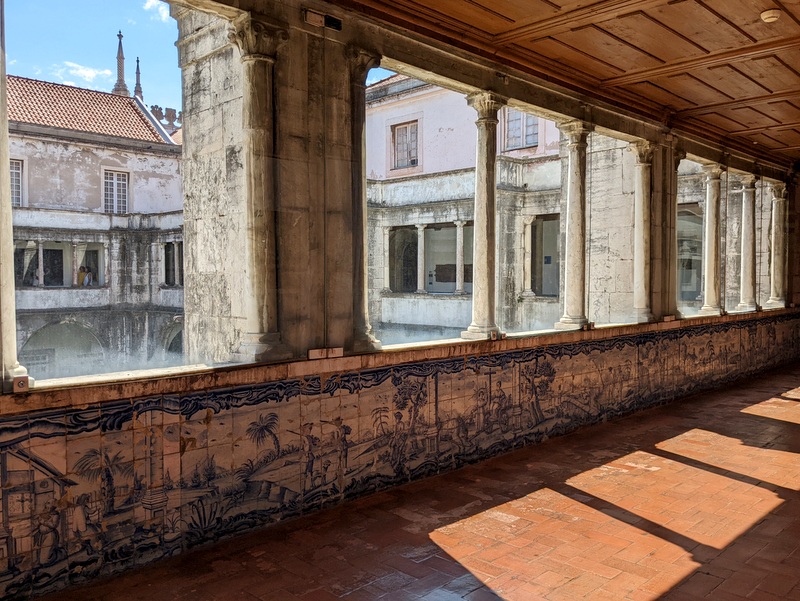
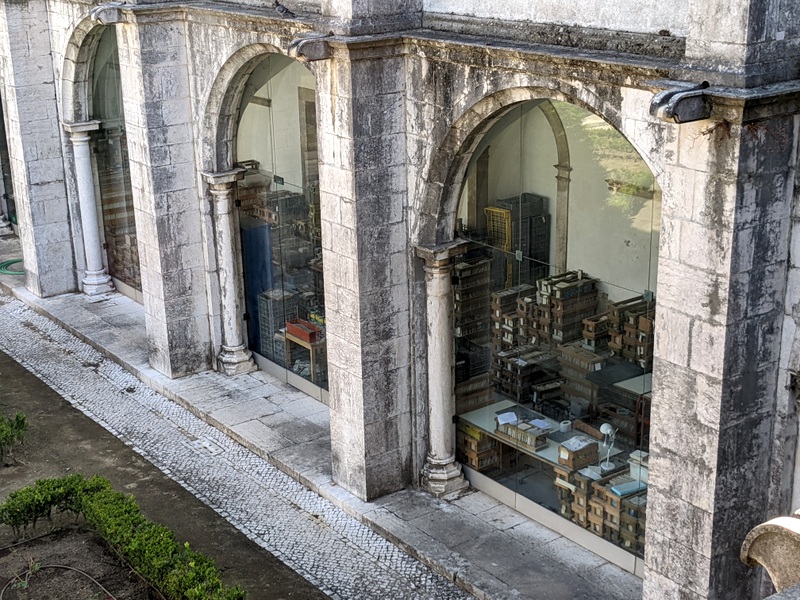

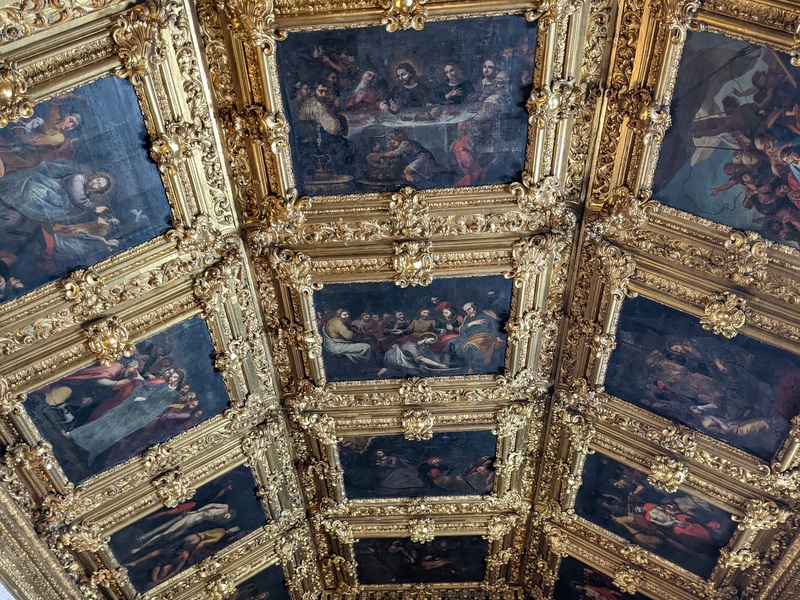
After I had my fill of the museum, I started to walk back toward the hotel. The area around the museum was filled with tall apartment buildings both modern and old alongside each other. It was hot and sunny again so I stuck to the shady side of the street and found myself walking alongside a high concrete wall. I kept trying to guess what was on the other side. Eventually, a break in the wall appeared and there was an open gate leading to an ornate building surrounded by mosaic tiles. It was a cemetery. A very fancy cemetery called the Cemitério do Alto de São João. I am not usually interested in walking around cemeteries but this one was intriguing so I went in and walked up and down a few of the paths. It was beautiful in a slightly creepy sort of way.
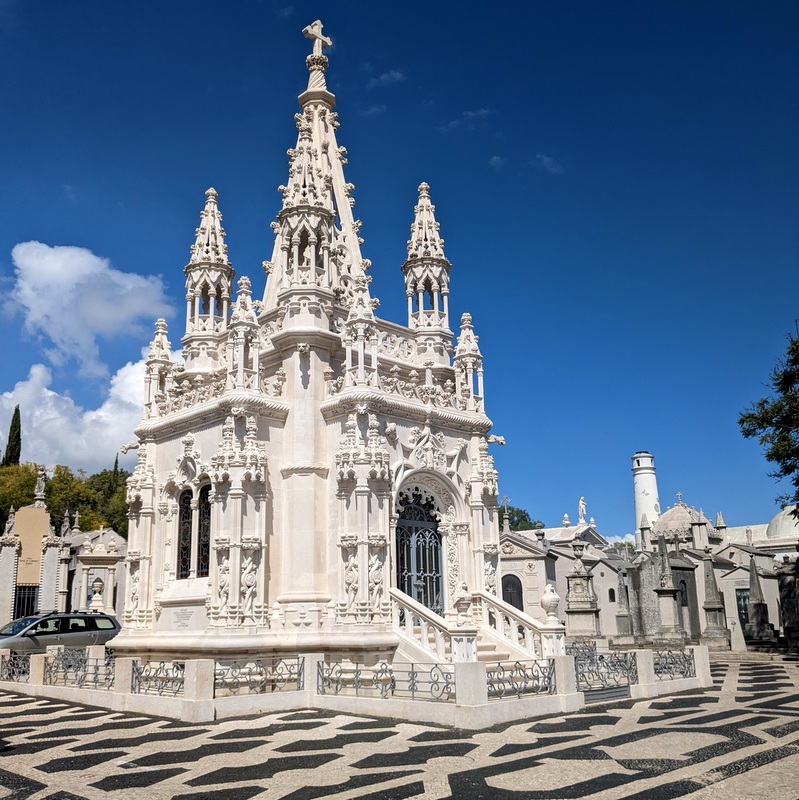

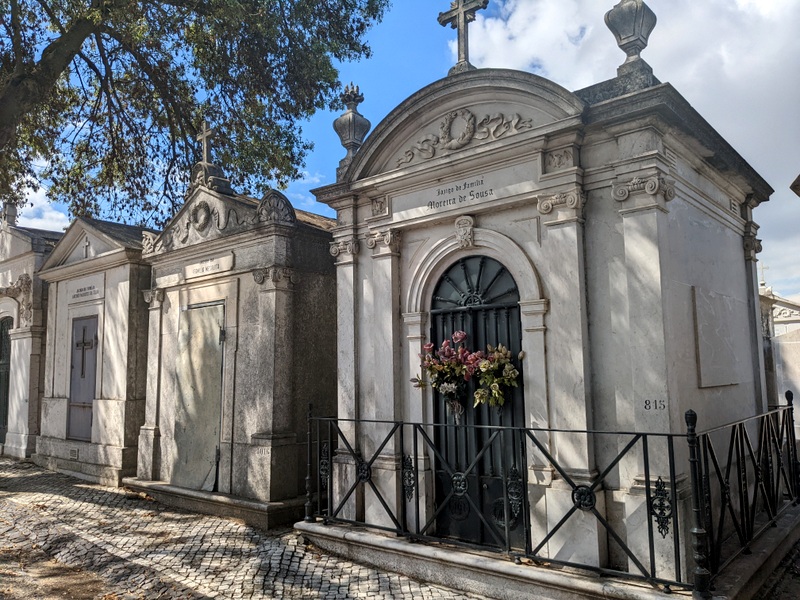

While in the cemetery, I got a message from Tim saying that he planned to come back into the city early so he could join me for our meet-up with some fellow former full-time RVers. It’s a good thing he messaged when he did. Otherwise, who knows how long I would have spent in that giant cemetery. Instead, I continued my walk back toward the hotel and arrived only a few minutes before Tim did. We then walked over to a cafe in a nearby park to meet up with the one and only Laura & Kevin from the Chapter 3 Travels blog!
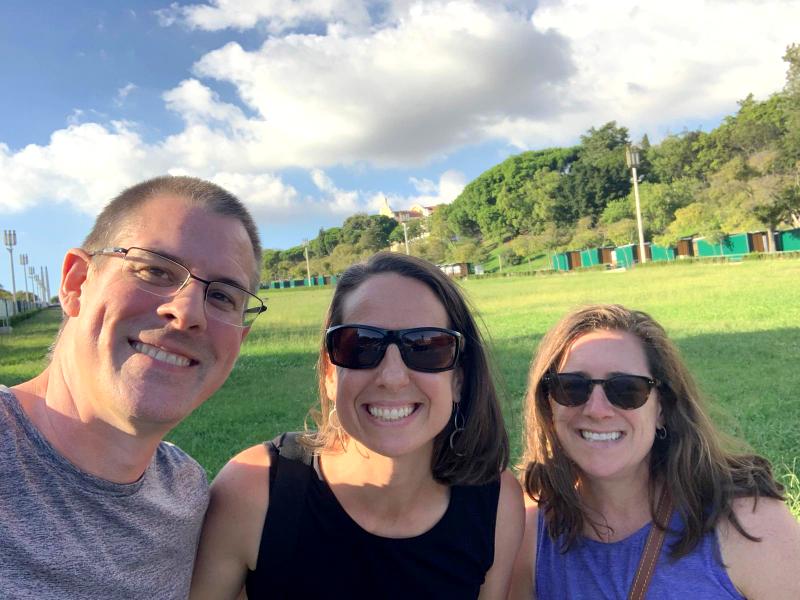
Even though our full-time RVing days overlapped with these guys for several years, we never met them while traveling in the US and instead only met for the first time after they moved to Portugal and we came to visit Lisbon. At the time of our meet-up, Laura & Kevin had arrived in the country just days before and were still staying in a temporary apartment on the other side of the river. So it was very nice of them to come into the city to meet up. We had a great time chatting and I am only sad that we didn’t meet sooner.
Tim left halfway through our meet-up to go join his work group who were in Lisbon for some sightseeing and dinner. After visiting with Kevin & Laura for a bit longer, I went back to the hotel for another nap (jet lag + sun & humidity are not a great combo) and then set out to meet up with more former full-time RVers for dinner.
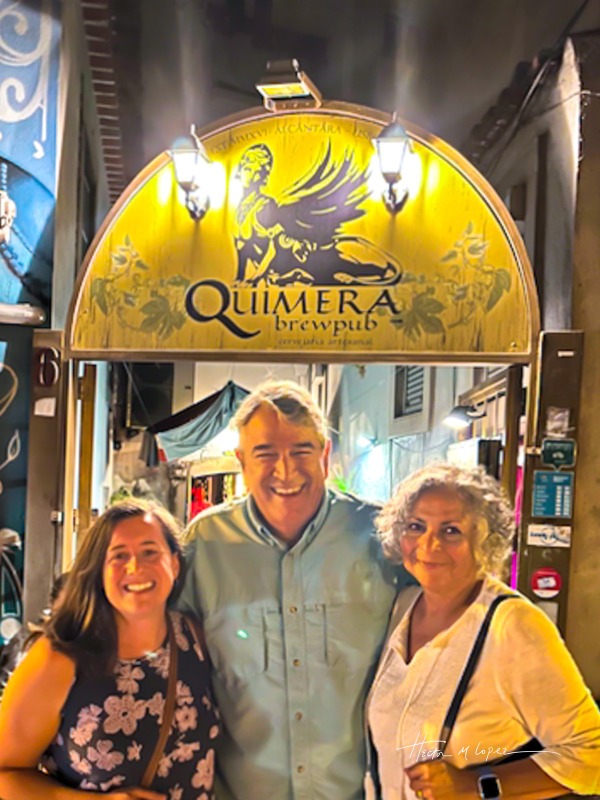
This time I was meeting Hector & Brenda. We first met these two many, many years ago when we were both boondocking on Dome Rock Rd in Quartzsite. Over the years we ran into them several more times until they stopped RVing and eventually moved to Mexico. When we arrived in Lisbon I saw a social media post they shared from Spain saying that they were on an extended trip. I decided to reach out on the off chance that they were coming to Portugal. Turns out they were and would be arriving in Lisbon one day before we were due to depart. Well if that isn’t fate I don’t know what is. So we arranged to meet up at a British pub (recommended by another former full-time RVer friend who currently lives in Spain) which just happened to be a block away from their AirBnB.
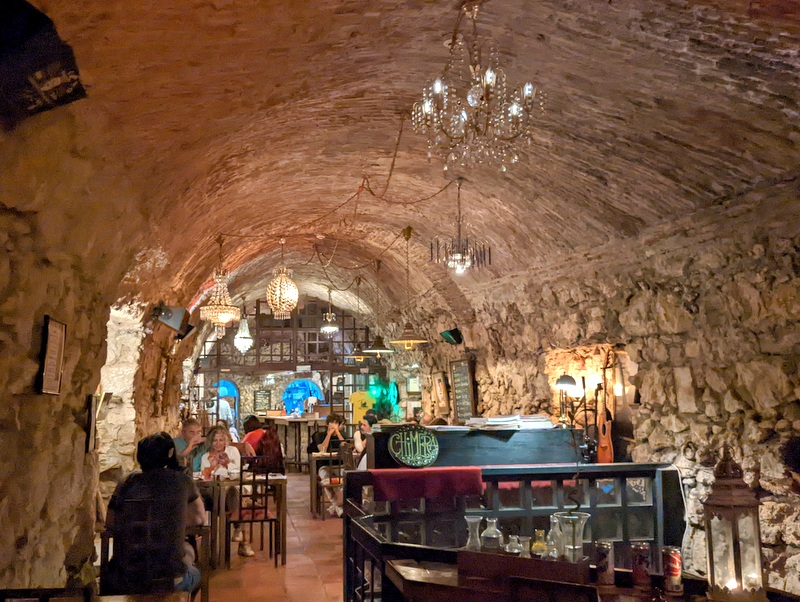
Quimbra was great overall. The old tunnel was very cool, the food was delish, the servers were wonderful, and of course, the company was outstanding! We were all tired after dinner but decided to extend the night a bit longer so Tim could come and meet us now that his work dinner in the city was done. We choose a rooftop bar right around the corner from the brewpub and walked over for a few (more) drinks. What an excellent way to end an amazing stay in Lisbon. I really love the energy of this city and cannot wait to go back and visit again someday!

Sintra
We left the hotel in Lisbon early the next morning. We could have taken the metro back to the airport to pick up our rental car, but the ride-share app in Lisbon is so convenient and cheap that it was easier to go this route. We arrived at the airport, got our rental car with little hassle, and were soon on the road to Sintra.
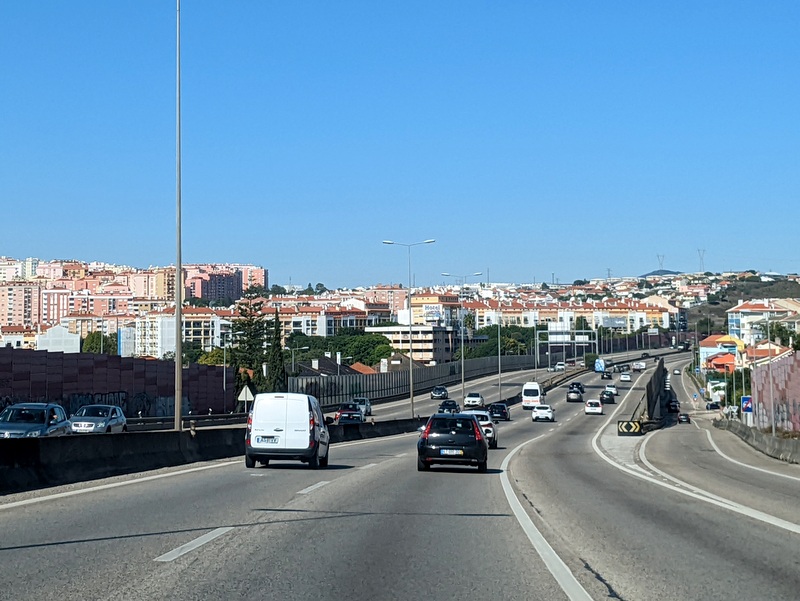
Sintra is another of those “must visit” places that show up on all the best of Portugal lists. As a result, there is a lot of advice out there about the best way to visit this busy tourist destination. The most common advice is to buy tickets ahead of time and take the train from Lisbon instead of driving yourself. Buying the tickets ahead was easy enough, but since we planned to go north from Sintra instead of back to Lisbon, driving ourselves there was non-negotiable. We researched some parking options ahead of time and easily found a few parking lots in the center of town. It’s worth noting that even though it was a busy Saturday, we got there in the late morning to find plenty of available parking. However, by the time we left around 3 or 4 in the afternoon, the parking lot was full.
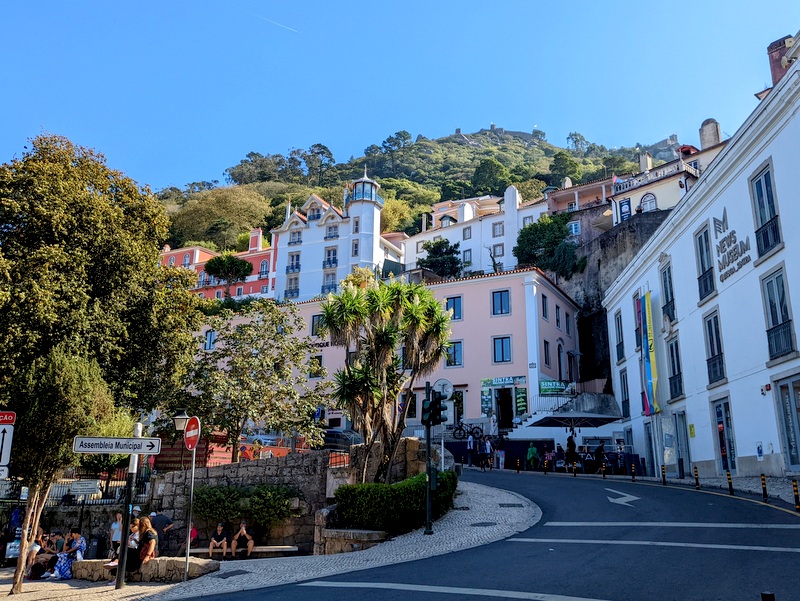
Sintra is a town located about an hour outside of Lisbon not far from the Atlantic coast. In addition to being a densely populated urban area, Sintra is also a major tourist destination known for its historic castles, palaces, and villas. You could easily spend days exploring all that Sintra has to offer (including the scenic beaches), but most visitors only take a day trip from Lisbon to see the major attractions. We had about a half day to see the sights before making the 45-minute drive to Obidos where we would spend the night.
After parking, we enjoyed a quick lunch of grilled ham & cheese (or Ham & Cheese Toasties as they call them), skirted around the throngs of tourist shopping for trinkets, and make our way to the path that would take us up to the Castle of the Moors.
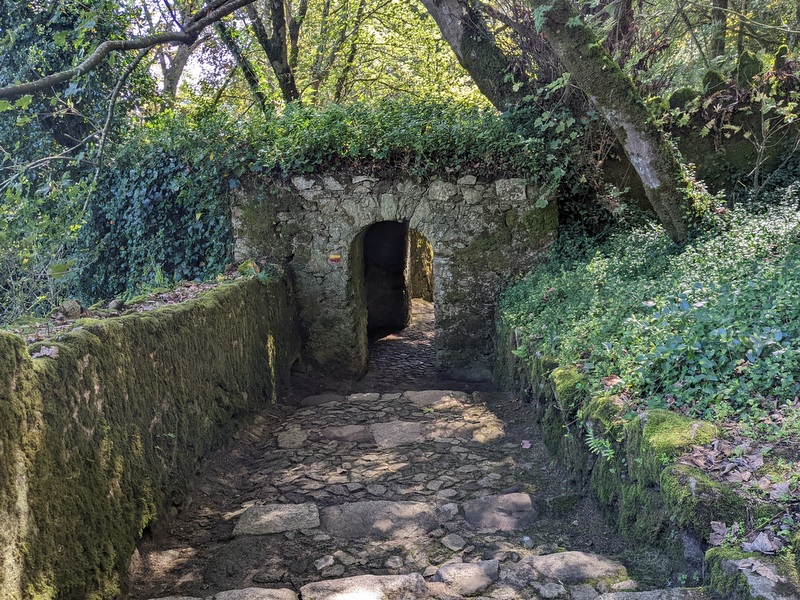
You can take a shuttle or tuk-tuk up the steep hill to the castle and Pena Palace, but since walking is our jam, we chose to hike the 2.5 km up the winding path through the forest to the castle walls.

The Castle of the Moors (also referred to as the Moorish Castle) dates back to the 8th and 9th centuries when it was constructed during the period of Muslim Iberia. In the mid-1100s during the Conquest of Lisbon, the castle was surrendered to the Christians who constructed a large chapel within the walls. Over the years, the castle became less of a military outpost and more of a residence and place of worship. Eventually, the castle was abandoned altogether and in 1775 the Lisbon earthquake caused considerable damage. In 1840, Ferdinand II took up the task of conserving the castle and by the end of the 19th century, what remained of the castle and the land around it was taken over by the National forest service.

Located at the top of the Sintra Mountains, the castle walls offer panoramic views of Sintra and beyond. A trip up to the Moorish Castle is a must when visiting Sintra. We breezed past the (short) line to buy tickets since we had purchased them ahead of time and were soon walking on and around what is left of the castle walls. One of the things I loved about visiting the Moorish Castle was how un-American the whole thing was. There were no ropes, railings, or warning signs about dangers. There were no rangers or guards telling you not to touch this, walk there, or stay back from the edge. Just some very old castle walls that you can scamper around as you like.
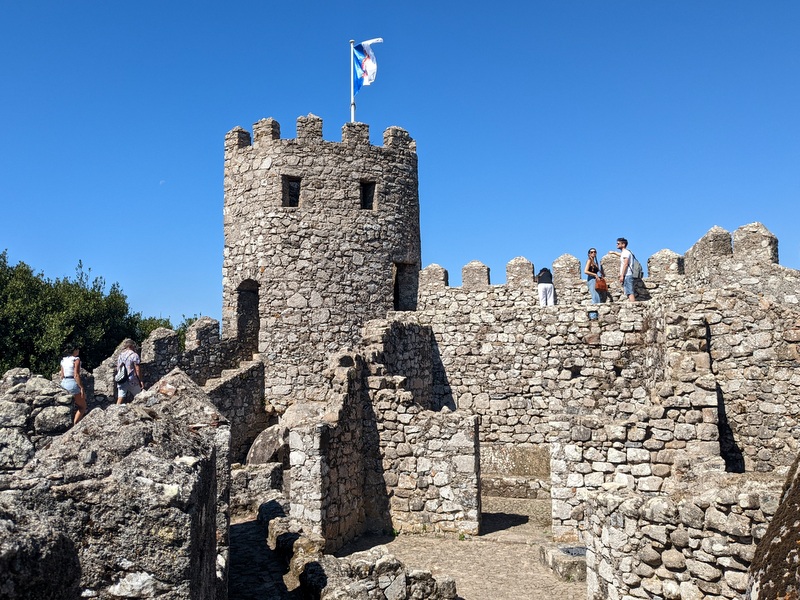
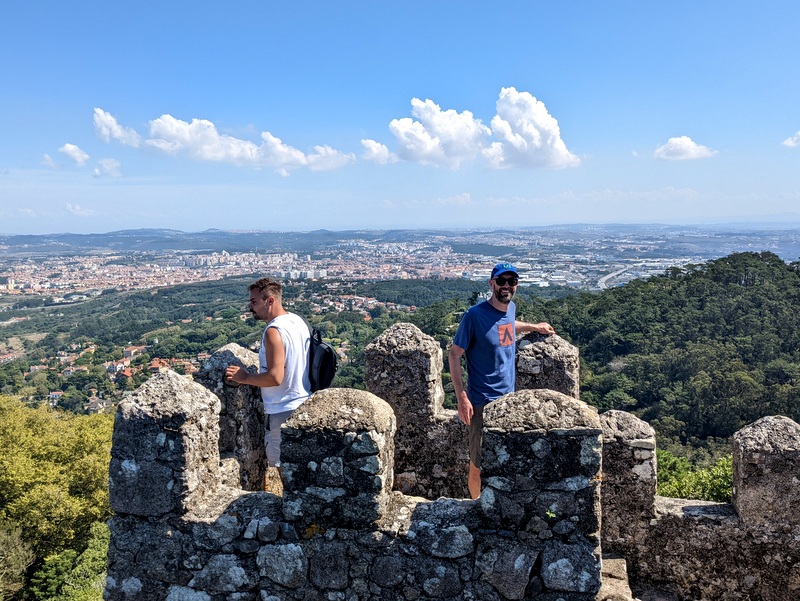
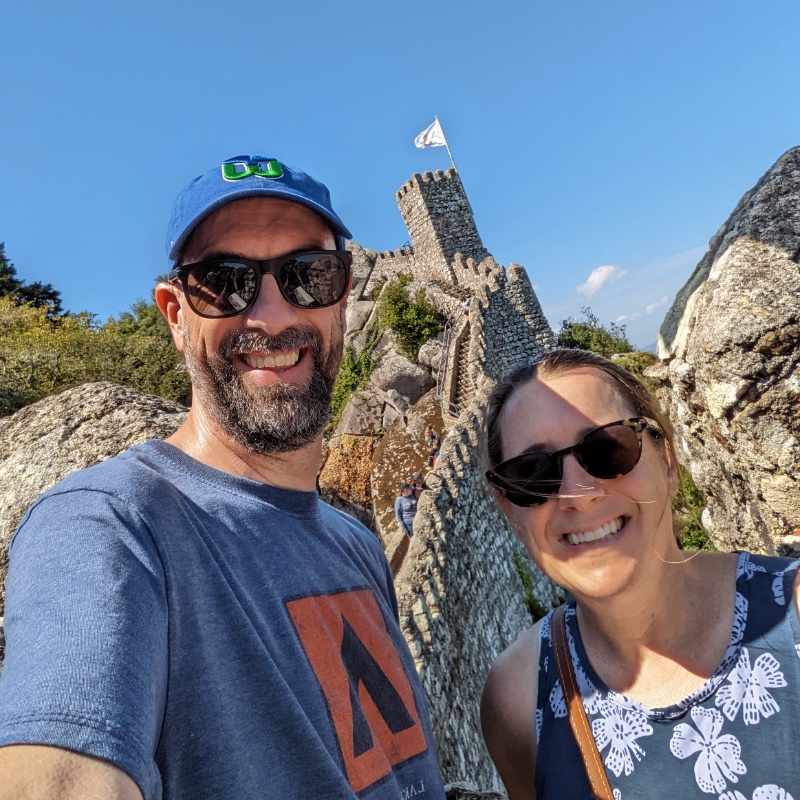
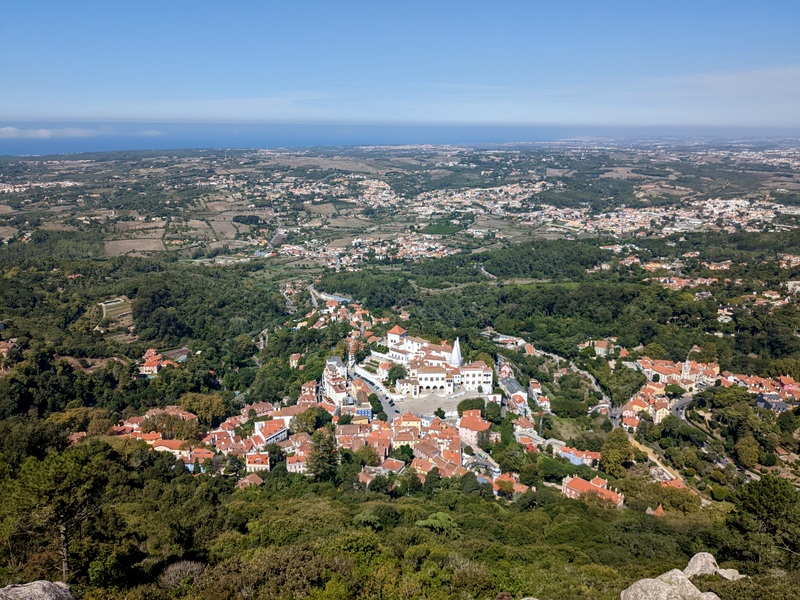

After getting our fill of the castle and its amazing views, we took the path over to the Palacio da Pena (Pena Palace). This might just be the main attraction of Sintra. It’s also by far the most popular. Even with our pre-purchased tickets we waited in line both at the entrance to the palace grounds and the entrance to the castle.
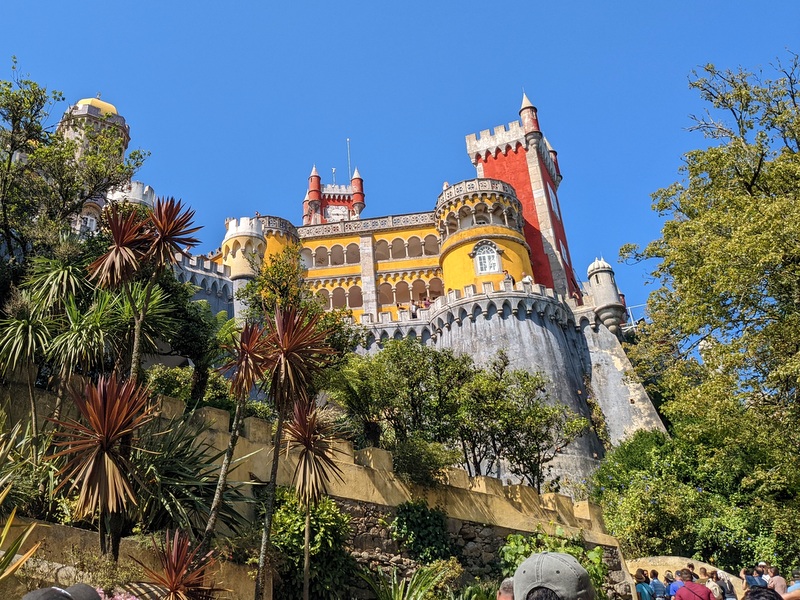

The short history of the Pena Palace is that it was commissioned to be built in the mid-1800s by King Ferdinand II and served as a part-time royal residence until 1889 when it was purchased by the Portuguese state. After the revolution in 1910, the palace and surrounding area were turned into a national monument. Of course, the full history is much longer and more complicated.
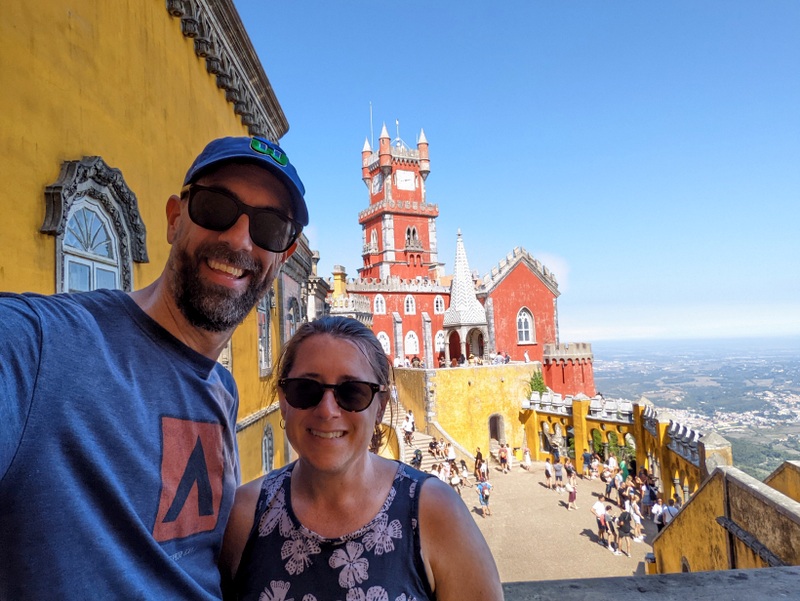
I accidentally only purchased tickets to visit the outside of the castle, so we didn’t get to tour the inside. Since our energy levels and tolerance for crowds at this point were seriously waning, it was probably for the best. After waiting in line for our timed entrance, we wandered around the outside of the castle, took some pictures, visited the gift shop, and then hopped in a tuk-tuk for a ride back down into town.


Overall, I think we enjoyed our free-range visit to the Moorish Castle over the crowded and regulated situation at the Pena Palace. But the palace was still very, very impressive and if we ever find ourselves in this area of Portugal again I wouldn’t hesitate to make a return visit. Although next time, I think a mid-morning weekday visit would be more enjoyable.
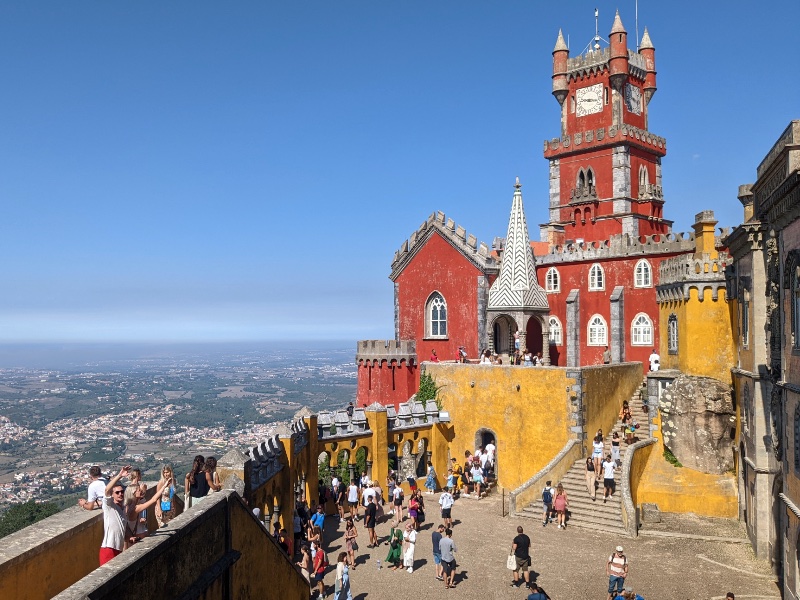
Once back in town, we found a quick snack (which in Portugal means a delicious pastry) and then got on the road to Obidos. More to come in the next post…
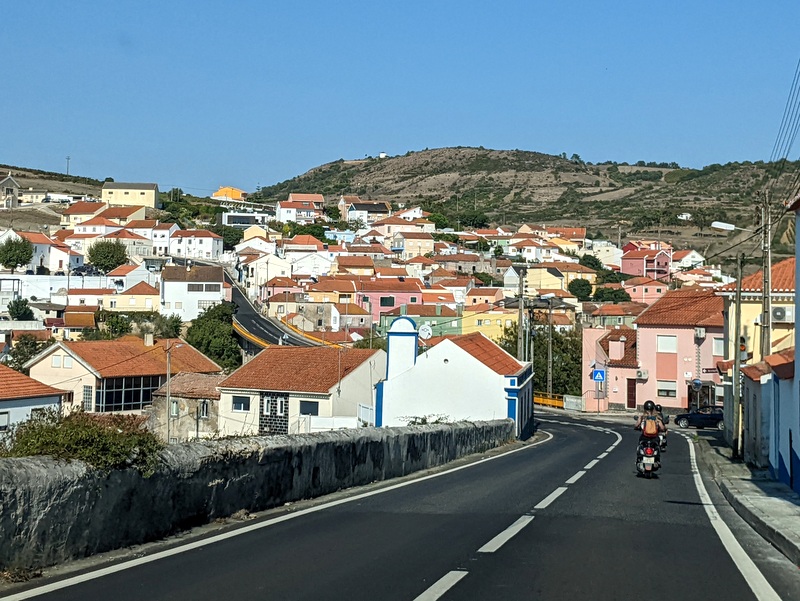
Portugal Part 2: Obidos, Nazaré & Coimbra
Portugal Part 3: Porto, Tomar & Évora

3 comments
Fun meeting ‘Chapter 3’, Laura writes a great blog. We almost got to meet them in San Diego, dang Covid! I like the explores monument, did you notice of Juan Cabrillo was on display? Here in San Diego there is no debate of his nationality, and on the reenactment of is sail into the San Diego, is the only time the streets are filled with Portuguese breads and sweets
What a great visit, to a colorful city.
Well if you go visit Lisbon, meeting Laura & Kevin should be high on your list! You know, I didn’t see any statues of Juan Cabrillo during out visit, although that doesn’t mean there are not any.
Your travels are still inspiring! Thank for sharing and all the great travel tips!